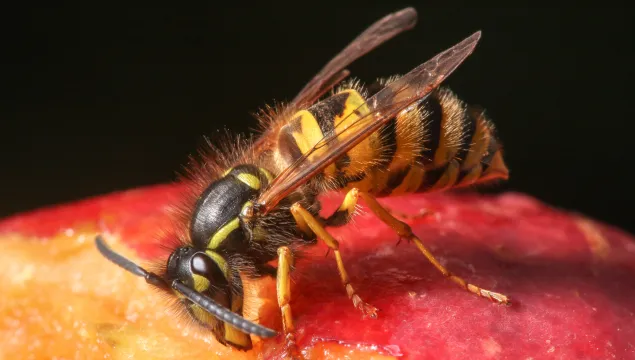
Common wasp
Wasps are well-known, and unfortunately not very well-loved! But give these black and yellow guys a chance, as they are important pollinators and pest controllers.

Wasps are well-known, and unfortunately not very well-loved! But give these black and yellow guys a chance, as they are important pollinators and pest controllers.
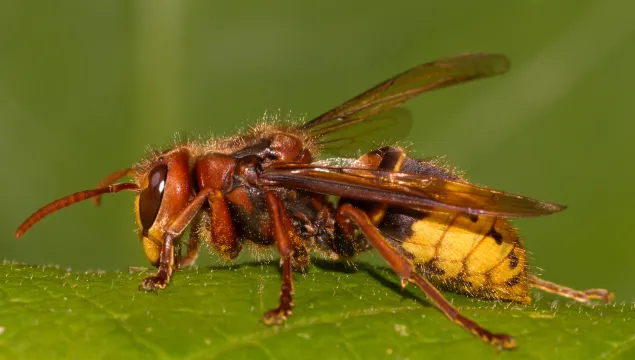
The fearsome-looking hornet may not be a well-loved insect, but it is actually much less aggressive than the common wasp. It is also an important pollinator and a predator of species that feed on plants and crops, so can be a gardener's friend.
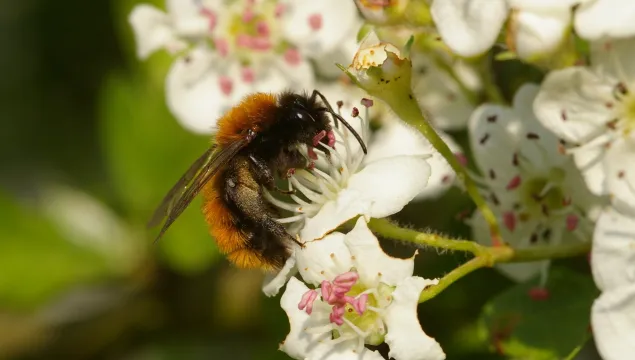
The Tawny mining bee is a furry, gingery bee that can often be seen in parks and gardens during the springtime. Look for a volcano-like mound of earth in the lawn that marks the entrance to its burrow.
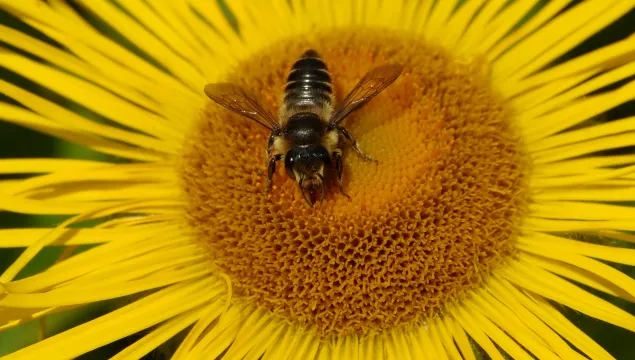
The appearance of semi-circular holes in the leaves of your garden plants is a sure sign that the patchwork leaf-cutter bee has been at work. It is one of a number of leaf-cutter bee species present in the UK.
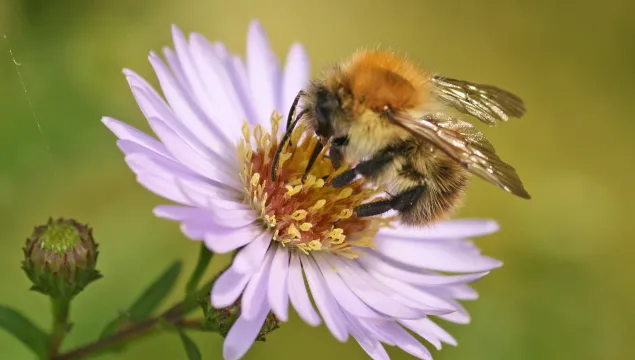
The common carder bee is a fluffy, gingery bumble bee that can often be found in gardens and woods, and on farmland and heaths. It is a social bee, nesting in cavities, old birds' nests and mossy lawns.
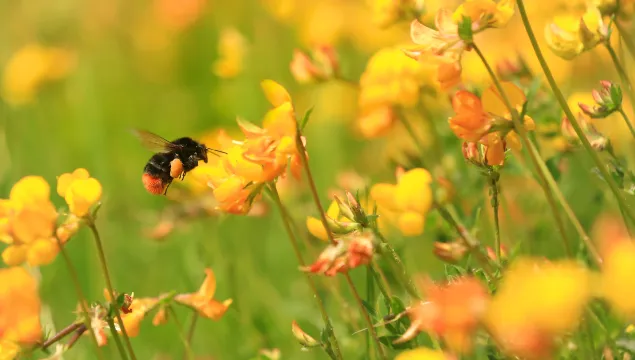
Living up to its name, the red-tailed bumblebee is black with a big, red 'tail'.
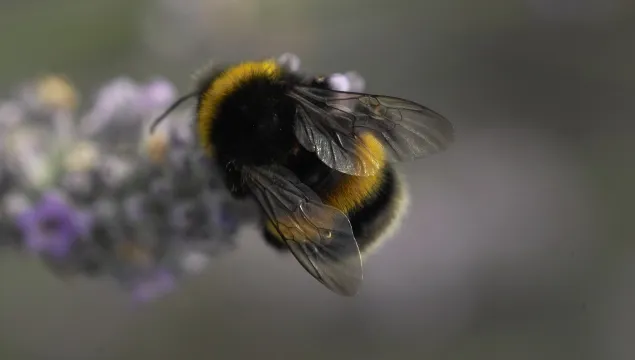
Living up to its name, the white-tailed bumblebee is black-and-yellow bee with a bright white 'tail'. A social bumble bee, it can be found nesting in gardens and woods, and on farmland and heaths.
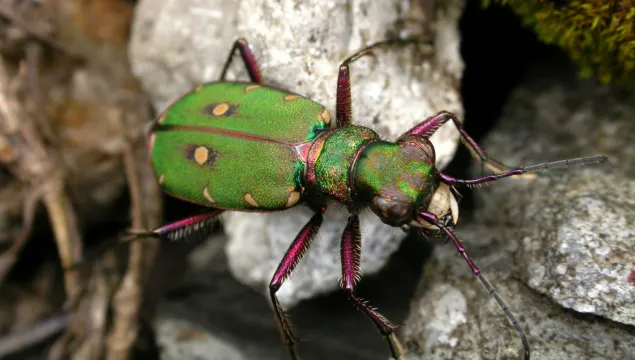
A ferocious and agile predator, the green tiger beetle hunts spiders, ants and caterpillars on heaths, grasslands and sand dunes. It is one of our fastest insects and a dazzling metallic green colour.
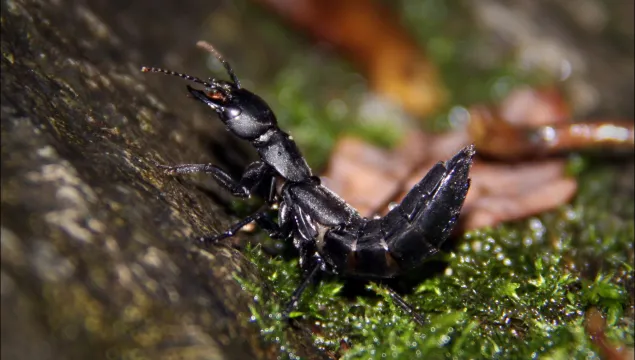
A ferocious and fast predator, the Devil's coach horse beetle hunts invertebrates after dark in gardens and on grasslands. It is well-known for curling up its abdomen like the tail of a scorpion when defending itself.
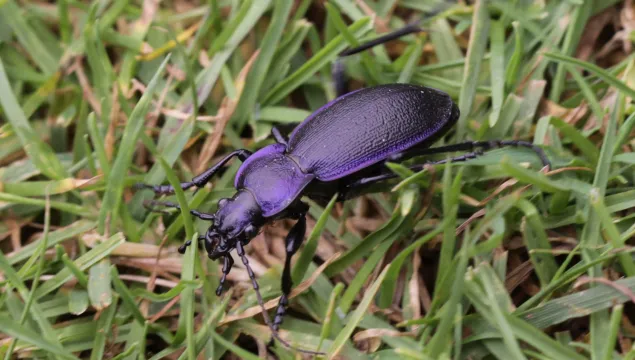
Violet ground beetles are active predators, coming out at night to hunt slugs and other invertebrates in gardens, woodlands and meadows.
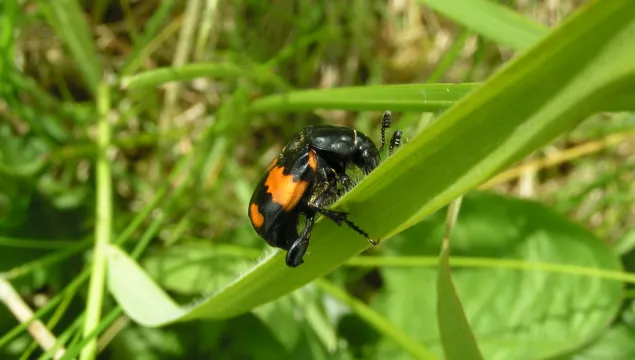
The Common sexton beetle is one of several burying beetle species in the UK. An undertaker of the animal world, it buries dead animals like mice and birds, and feeds and breeds on the corpses.

Famous for its fearsome jaws, the stag beetle does not have the bite to match. Look for it in woods, parks and gardens in South East England in summer. Males display their massive jaws to attract females and duel with their rivals.